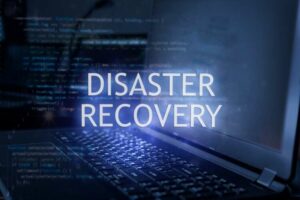 COVID-19 has forever altered how we view, develop, deploy, and value business continuity planning.
COVID-19 has forever altered how we view, develop, deploy, and value business continuity planning.
This global health crisis created unprecedented change and challenges across enterprises, industries and countries. It sounded an alarm for preparedness, and every surviving private organization or government agency must respond with immediate and long-term business continuity plans to keep moving forward.
A sound business continuity strategy that builds operational resilience and mitigates risk for an unpredictable future has never been more important.
What is Disaster Recovery?
Disaster recovery is an organization’s method of regaining access and functionality to its IT infrastructure after events like a natural disaster, cyber attack, or even business disruptions such as the COVID-19 pandemic.
A variety of disaster recovery (DR) methods can be part of a disaster recovery plan. DR is one aspect of business continuity.
How does disaster recovery work?
Disaster recovery relies upon the replication of data and computer processing in an off-premises location not affected by the disaster. When servers go down because of a natural disaster, equipment failure or cyber attack, a business needs to recover lost data from a second location where the data is backed up. Ideally, an organization can transfer its computer processing to that remote location as well in order to continue operations.
To make Disaster Recovery work, all the technical and non-technical aspects must be documented in a timely fashion.
What is a disaster recovery plan?
A disaster recovery (DR) plan is a formal document created by an organization that contains detailed instructions on how to respond to unplanned incidents such as natural disasters, power outages, cyber attacks and any other disruptive events.
The plan contains strategies on minimizing the effects of a disaster, so an organization will continue to operate – or quickly resume key operations.
Why is a disaster recovery plan important?
The business impact of outages or unplanned downtime can be extremely high, more so in a hybrid multicloud environment.
Key reasons why a business would want a detailed and tested disaster recovery plan include:
- To minimize interruptions to normal operations.
- To limit the extent of disruption and damage.
- To minimize the economic impact of the interruption.
- To establish alternative means of operation in advance.
- To train personnel with emergency procedures.
- To provide for smooth and rapid restoration of service.
- To meet today’s expectation of continuous business operations, organizations must be able to restore critical systems within minutes, if not seconds of a disruption.
Bottomline
A good disaster recovery plan document will be detailed, kept up-to-date with current information, and accessible by anyone who needs to refer to it in the case of a disaster. The elements will vary according to your company’s structure, the type of business you have, and what services you have supported by partners.